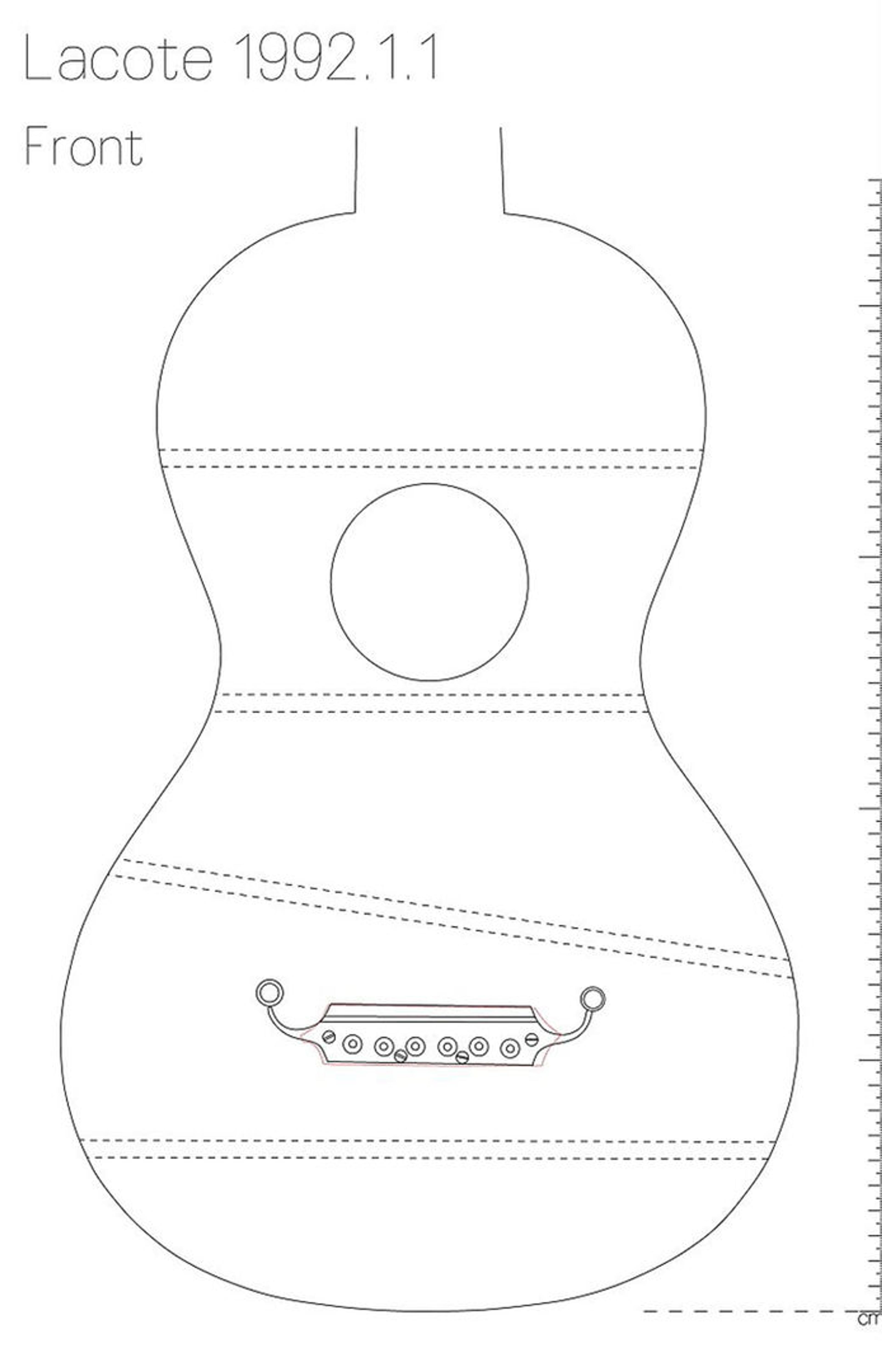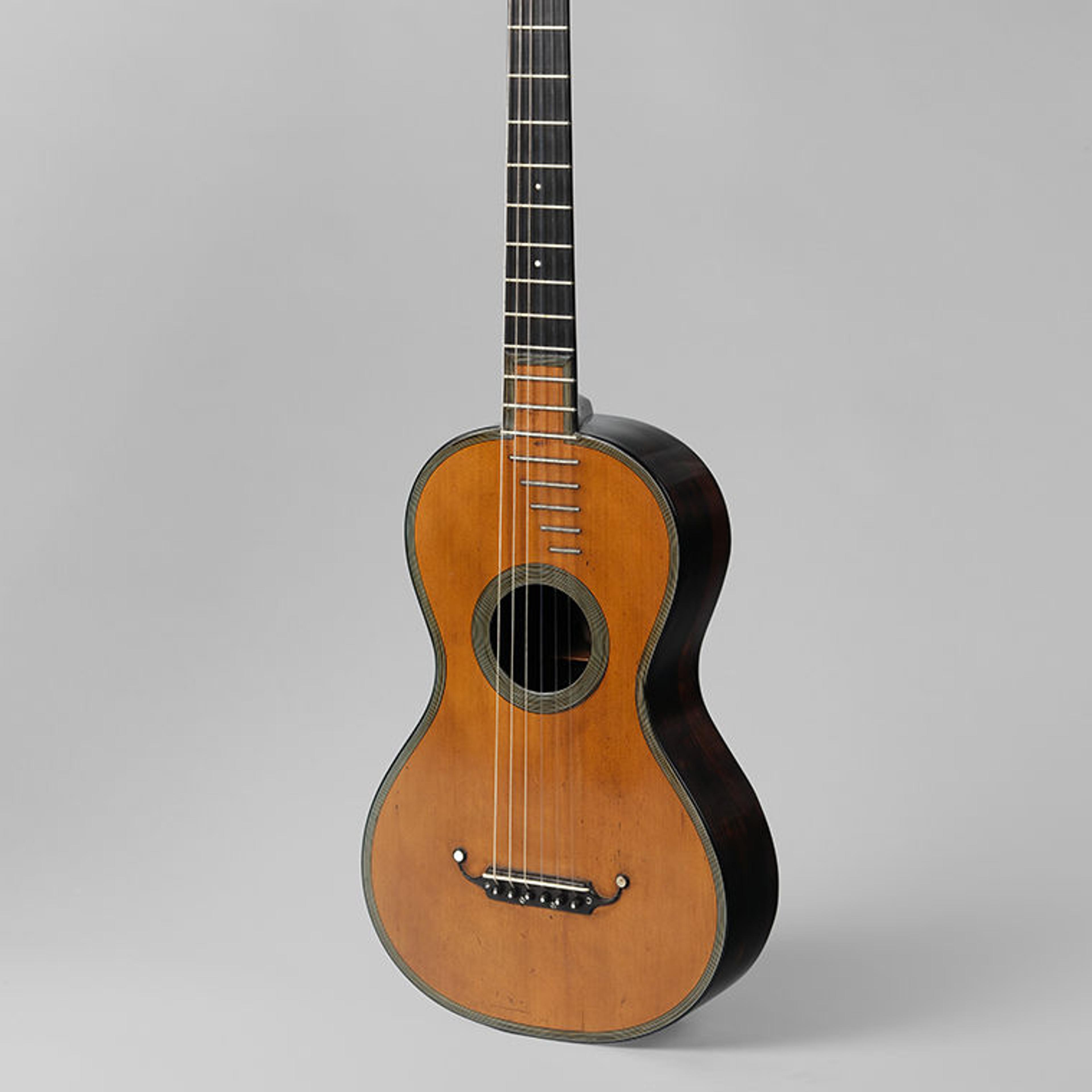From Jayson Kerr Dobney, Frederick P. Rose Curator in Charge of the Department of Musical Instruments:
In 2012, the Department of Musical Instruments at The Met established a partnership with the National YoungArts Foundation, an organization that nurtures emerging musicians. In this Collection Insights series, we present blogs written by six YoungArts alumni with short clips from concerts they presented on our Patrons Lounge series.
The Met's Patrons Lounge Concerts are made possible by The Dorothy Strelsin Foundation.
I recently had the opportunity to play The Met's ca. 1835 Lacôte guitar, and that gave me the chance to explore some music that would probably have been played on it during Lacôte's lifetime. Since the guitar is signed by the famed composer Fernando Sor, I thought it appropriate to play two works by him. I chose two pieces with very memorable titles: Moderato, Op. 5, No. 22, and Allegro Moderato, Op. 6, No. 11. The beauty of the pieces, thankfully, is inversely proportional to their titles.
Pierre-René Lacôte (French, Paris 1785–1855 Paris), Guitar, ca. 1835. Spruce, rosewood, ebony. The Metropolitan Museum of Art, New York, Purchase, Clara Mertens Bequest, in memory of André Mertens, 1992 (1992.1.1).
When I first picked up the Lacôte, it felt very different from my own guitar, mostly because nineteenth-century guitars are much smaller in both body and neck. I had never performed on a vintage guitar like this before, so it took a little getting used to. But to my amazement, the guitar packed a pretty powerful punch. I was very excited to play this guitar, as not only was it signed by Sor, but it was previously owned by a guitar hero of mine, Julian Bream. As expected, the pieces I chose to play by Sor on the Lacôte worked wonderfully. The guitar sounded much better than I expected a guitar from the early nineteenth century to sound. The guitar — unlike the violin or piano — boasts no builders with household names like Stradivarius or Steinway, but it became apparent to me that this Lacôte was a very fine instrument.

Drawing of the Lacôte Guitar (1992.1.1) by D. Wheeldon, 2016.
During this concert, I also performed on The Met's 1953 Fleta guitar. The Fleta is most similar to my 2013 Antonius Müller cedar double top guitar: both instruments are constructed in the style of Torres and Hauser, noted by their clean, well-proportioned look. However, both the Fleta and the Lacôte are quite different from my own instrument. The Fleta has a wonderful palette of colors, but, like almost all guitars constructed with a single top, it doesn’t have the same power as many modern guitars. Since I was amplified for the concert, it made no difference at all; had the concert been acoustic, it would have been very apparent that the Fleta is not as loud as my own recently-constructed double-top guitar. Beyond its wonderful timbre palette, the playability of the 1953 Fleta holds its own compared to modern guitars.
I first began playing guitar as a teenager because of a childhood obsession with Rock & Roll and Heavy Metal names such as Metallica, Ozzy Osbourne, and Led Zeppelin. Recently, I have been bringing my classical training back to my rock days and have been arranging rock and pop songs as solo instrumental songs. For this concert, I chose to play a program I called "classical rock," that paired classical pieces with a rock or pop counterpart song. I played two Bach Preludes to open the show and paired them with two songs by The Beatles: Here Comes the Sun and Yesterday. In my humble opinion, Bach and the Beatles were the foremost masters and pioneers of their genres. After that, I paired Roland Dyens’ Tango en Skaï with Francesco Sartori’s Time to Say Goodbye because they are both songs that are often misinterpreted. Dyens' Tango en Skaï roughly translates to "Vinyl Tango" because it is written in 4/4 opposed to the 2/4 time signature of standard tangos. Just as vinyl is fake leather, this is a "fake" Tango. Sartori's Time to Say Goodbye was made famous by Andrea Bocelli and is most often thought to be a farewell song, as it is almost always sung at the end of a performance. If you really look at the words though, you’ll notice that it’s actually a song about two lovers saying goodbye to their old lives so they can start anew with one another. It is not a farewell song at all; it’s a love song.
After that, I played two pieces by Sor on the Lacôte guitar: Moderato, Op. 5, No. 22 (featured in the clip below), and Allegro Moderato, Op. 6, No. 11 — these works are known as Sor Study No. 5 and No. 17. These alternate names came about because the pieces had relatively little success until they were included in Andrés Segovia's modestly named anthology of Sor's music, Andrés Segovia – Twenty Studies for the Guitar by Fernando Sor. Under very similar circumstances, Leonard Cohen's now famous Hallelujah received very little acclaim until Jeff Buckley, k.d. lang, and many other renowned artists made their own versions.
Finally, I paired Johann Kaspar Mertz's Fantaisie Hongroise with Freddie Mercury's Bohemian Rhapsody, originally written for electric guitar like the ones featured in the current Met exhibition Play It Loud: Instruments of Rock & Roll. Not only do these songs both reference places in Eastern Europe, but a [musical] fantasy and rhapsody are very similar. They are both pieces with no strict form, include many sections, and are often operatic in character. Both of these tunes are exactly that and both also include a pretty rocking section near the end.
YoungArts guitarist Ben Pila plays "Estudio 5" (Moderato, Opus 35, No. 22), Fernando Sor (1778–1839), on The Met's ca. 1835 Lacôte Guitar. Recorded live on May 11, 2018.
The Department of Musical Instruments at The Met devoted their entire 2017–18 season of Concerts for Patrons to performances by six YoungArts prizewinners, all of whom performed on historic instruments from The Met collection. The musicians were then asked to write about their experiences. See the full series here.
